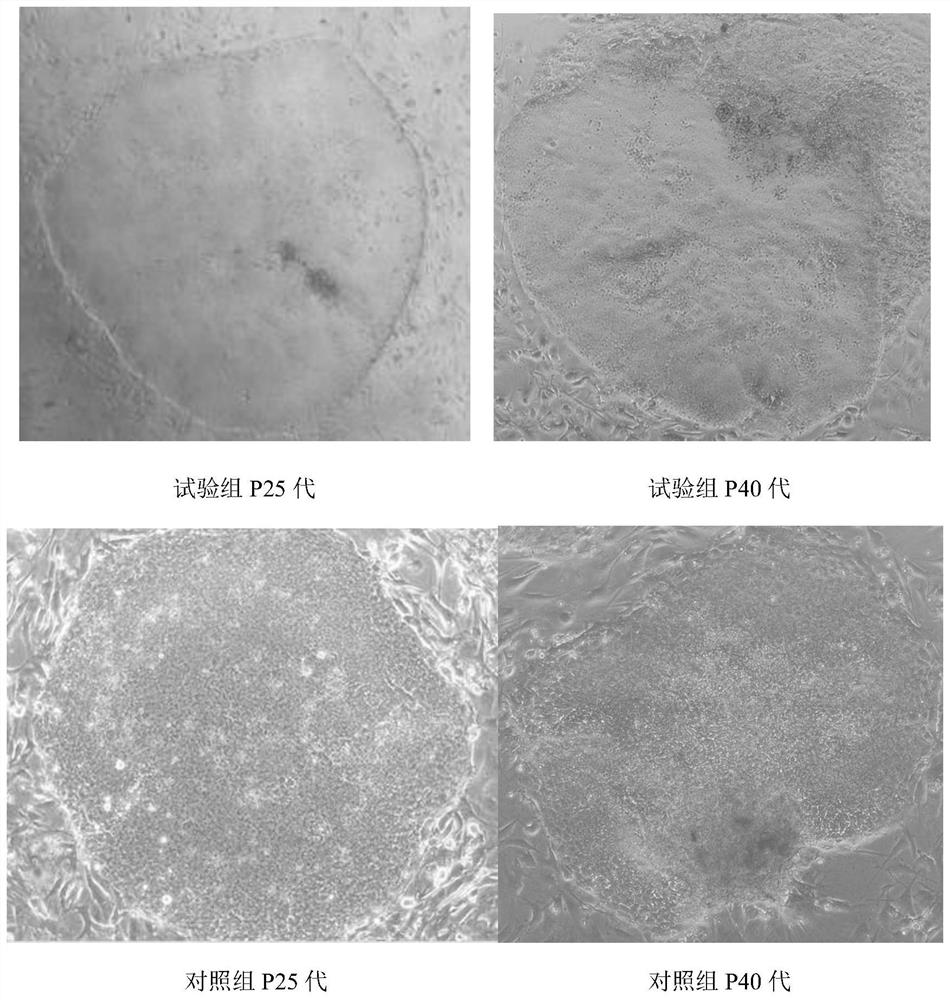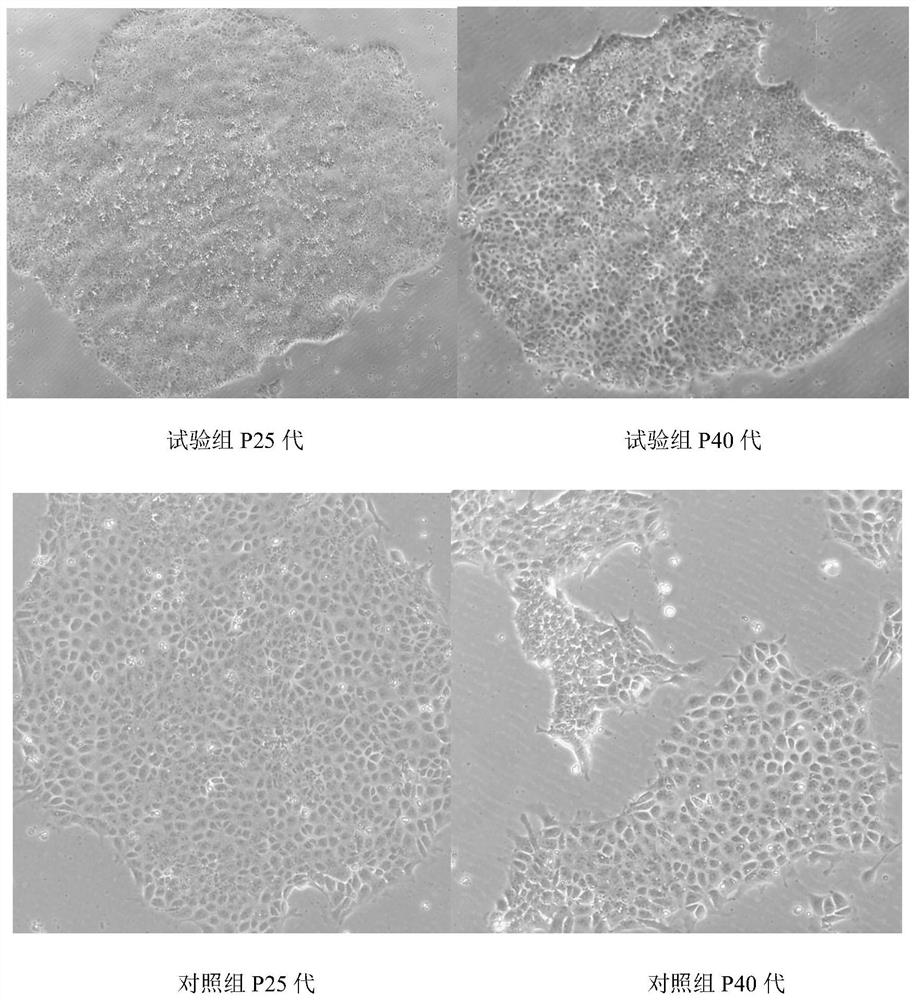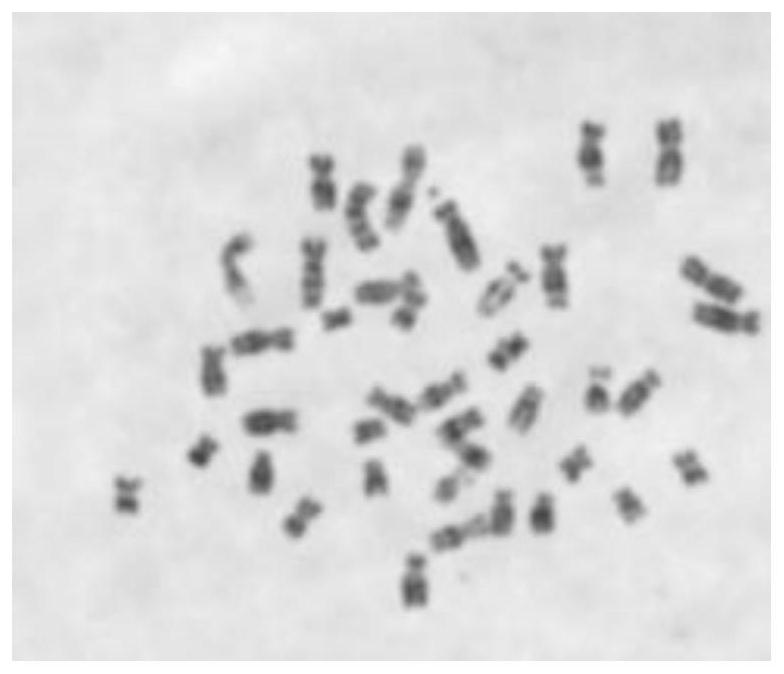A serum-free medium for monkey embryonic stem cells
A technology of serum-free medium and embryonic stem cells, which is applied in the field of stem cell culture to achieve the effects of ensuring safety, eliminating pathogen contamination, and determining components
- Summary
- Abstract
- Description
- Claims
- Application Information
AI Technical Summary
Problems solved by technology
Method used
Image
Examples
Embodiment 1
[0030] Embodiment 1, the preparation of culture medium
[0031] This embodiment provides a serum-free medium for monkey embryonic stem cells, which uses DMEM-F12 as a basal medium, and adds the following additive components to the basal medium. The concentrations are also shown below:
[0032]
[0033]
[0034] The non-essential amino acids consist of equal concentrations of alanine, arginine, aspartic acid, cystine, proline and tyrosine.
[0035] The manufacturers and product numbers of cell culture reagents and cytokines used in this example are shown in the following table:
[0036]
[0037]
[0038] The complete medium prepared above was sterilized by filtration with a 0.22 μm filter, and stored at -20°C in the dark.
[0039] The parameters of the above medium are as follows:
[0040] pH: 7.4
[0041] Osmotic pressure: 340mosm
[0042] Bacterial, fungal test: negative
[0043] Chlamydia, Mycoplasma Test: Negative
[0044] Endotoxin: <0.5EU / mL
Embodiment 2
[0045] Example 2. Cultivation of rhesus monkey embryonic stem cell line in feeder layer system
[0046] 1. Test material: macaque embryonic stem cell line.
[0047] 2. Test method: The test materials are divided into test group and control group, among which:
[0048] Experimental group: P25 generation rhesus monkey embryonic stem cells were divided into 5 × 10 4 / well in 6-well plates pre-plated with feeder cells, which are monolayers of mouse embryonic fibroblasts treated with 10 μg / ml mitase-C for 2-2.5 hours cells, and the serum-free medium for monkey embryonic stem cells obtained in Example 1 was added to the wells of the 6-well plate and placed at 37°C, 5% CO. 2 Continuous culture was carried out in an incubator, the medium was changed once a day, and subcultured once every 5 days. During subculture, Collagenase IV was used to digest for 3 min, and the macaque embryonic stem cell colony was cut into small pieces of suitable size and uniformity with a sterile glass pip...
Embodiment 3
[0051] Example 3. Cultivation of rhesus monkey embryonic stem cell line in feeder-free system
[0052]1. Test material: macaque embryonic stem cell line.
[0053] 2. Test method: The test materials are divided into test group and control group, among which:
[0054] Experimental group: P25 generation rhesus monkey embryonic stem cells were divided into 5 × 10 4 The density of / well was seeded into a 6-well plate pre-coated with Matrigel overnight, and the serum-free medium for monkey embryonic stem cells obtained in Example 1 was added and placed at 37°C, 5% CO. 2 The incubator was continuously cultured, the medium was changed once a day, and the subculture was carried out every 5 days. The subculture was digested with EDTA for 3 minutes, and the rhesus monkey embryonic stem cell line was cloned into uniform small pieces by gently pipetting with a 1 mL gun, and then subcultured at a ratio of 1:5.
[0055] Control group: The method was the same as that of the experimental gr...
PUM
 Login to View More
Login to View More Abstract
Description
Claims
Application Information
 Login to View More
Login to View More - R&D
- Intellectual Property
- Life Sciences
- Materials
- Tech Scout
- Unparalleled Data Quality
- Higher Quality Content
- 60% Fewer Hallucinations
Browse by: Latest US Patents, China's latest patents, Technical Efficacy Thesaurus, Application Domain, Technology Topic, Popular Technical Reports.
© 2025 PatSnap. All rights reserved.Legal|Privacy policy|Modern Slavery Act Transparency Statement|Sitemap|About US| Contact US: help@patsnap.com



